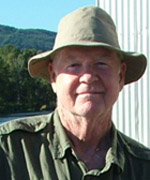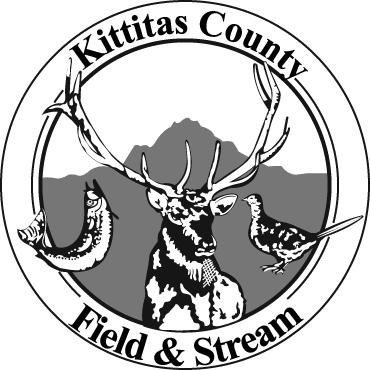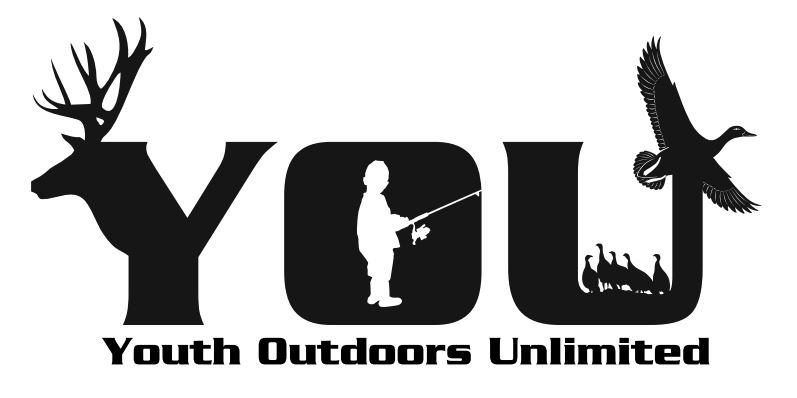Archive for November, 2018
All about Those Bird Counts
Last week, Gloria Baldi (long time active board member of our Kittitas Audubon Society) and I were discussing North American bird counts and dates for upcoming local counts. As the family-friendly Thanksgiving Bird Count was about to happen, Gloria thought I might be interested in an article about its possible demise.
Our conversation got me thinking about the four birdcounts about which we most often hear, their importance, and how little many of us know about them. Start with the just-completed Thanksgiving Bird Count, then look to the Christmas Bird Count. In mid-February the Great Backyard Bird Count happens, and in spring, across North America, the Breeding Bird Survey will happen. At a variety of levels, these counts involve huge numbers of birders, and give us insight into environmental conditions over time.
The article Gloria sent me was from the North Coast Journal, published in northern California’s Humboldt County. Kimberly Wear’s piece, “Bye Bye, Bird Count” focused on John Hewston, a retired prof from Humboldt State University and the coordinator, for the past 25 years, of the Thanksgiving Bird Counts.
The Thanksgiving count was started by professor Ernest Edward of Sweet Briar College in Virginia in 1966. Hewston took over tracking the counts in 1992. The count was designed to be simple; those who want to play get their forms online from a site publicized each year, pick a 15-foot diameter circle (often easily watched from inside the house) and spend an hour counting the birds that appear in the circle. The results of the nearly 500 counts are recorded and supplied to all participants, as well as to various scientists and organizations which monitor bird populations and trends – the 50 years of records are highly valued.
Hewston was drawn to birding nearly 90 years ago. “In those days,” he was quoted as saying. “that wasn’t anything anyone did but little old ladies in tennis shoes.” His lifelong love of birding led him to create newsletters and surveys – and the Thanksgiving Bird Count. He is now retiring (at the age of 93) from his tallying and tracking duties. The future of “his” count is unknown at this time.
The Christmas Bird Count (CBC) was proposed by ornithologist Frank M. Chapman, an officer of the fledgling Audubon Society. Observers and serious scientists were alarmed about declining bird populations and the counting started on Christmas Day 1900. This year is the 119th year of the count – the longest-running citizen science activity in North America.
Starting in November of each year, birders wanting to in participate in the CBC can sign up and join in through the Audubon website. Then, on selected days between December 14 and January fifth, thousands and thousands of volunteers across the continent will face whatever the weather offers to count birds in a 15 mile diameter “count circle.” Generally, at least 10 volunteers count every bird they see in each circle, following specific routes or watching feeders. [Note that the Ellensburg, Washington, CBC will happen on Saturday, 15 Dec. Gloria Baldi, 509-933-1558, will have more information. The Cle Elum count will be on Monday, 17 Dec. with details available from Michael Hobbs at [email protected].]
CBC data collected over the almost-119 years allow Audubon researchers, biologists, wildlife agencies and other stakeholders to study the long-term health and status of bird populations across North America. With other surveys, the century-plus of data provides a picture of our continent’s bird populations in time and space. That long look is critical to understanding birds and the habitat on which we all depend.
The Great Backyard Bird Count (GBBC) started in 1998. This citizen science project happens annually in mid February. GBBC is a four-day event involving the Cornell Lab of Ornithology and the National Audubon Society. Birdwatchers all across the globe are asked to count and report the birds in their home areas. Data is returned online and compiled for use in scientific research – and is generally available in near real-time. A number of other birdwatch events are now coordinated with the GBBC, and, under the watchful eye of expert birders, the solid data is widely informing awareness of population and habitat changes of common birds.
The North American Breeding Bird Survey (BBS), undertaken during nesting periods, is a joint project of the United States Geological Survey (USGS) and the Canadian Wildlife Service. The data from this survey, launched in 1966, forms much of the basis for the range maps found in field guides.
The survey counts along approximately 3700 active routes in the United States and Canada. Thousands of experienced birders participate each year, providing information used to produce continental-scale relative abundance maps for bird species observed, and some insight into population changes.
Bird counts are important. While the Thanksgiving Bird Count may be drawing to a close, the other counts will continue, and there are plenty of ways for the growing numbers of birders to help with similar ongoing efforts. After all, Hewston noted, “It’s a cool thing to do now, which it didn’t used to be.”
Comments Off on All about Those Bird Counts
On Being Thankful
Webster’s New World Dictionary does it this way: “Thanks’giv’ing. 1. A formal public expression of thanks to God. 2. An annual U.S. holiday.”
We kicked off this week of being thankful at one of our regular scholarship dinners Sunday evening. The meal always involves a prayer of thanks, great food, and lively conversation about recent or distant moments for which we are grateful – weddings, health, time with friends and family, and those who deeply enriched our lives before dementia, Alzheimer’s, or time led them on to their final rewards. We smiled and laughed and commiserated – a good start to this week of Thanksgiving.
I’d guess we’re all still thinking about these moments and the folks who made them.
Every year about now, I savor the last Thanksgiving with my stepdad – my Dad – Ray Fontes. He fell madly in love with my Mom when I was finishing high school. Quick with a quip and grateful for all he had, he showed me how to pull a family together with humor, acceptance, and a big loving heart. In exchange, I taught him to hunt antelope – I got the better of that trade.
At the turn of this century, Dad’s Alzheimer’s had him in a nursing home. I bailed him out for Thanksgiving dinner at Aunt Millie=s. He ate well, and seemed content, but Alzheimer=s kept taking him somewhere far away from the rest of us. Back at the nursing home we hung out for a few hours. We talked about hunting and fishing and memorable Thanksgivings. Now and again, his eyes lit up.
He smiled when I talked about that 1961 holiday. I was a DJ at KATN, Boise’s small country (country-western in those days) station. I produced a daily program, “Idaho Outdoors,” and interviewed folks like outdoor writer Ted Trueblood, Idaho Game & Fish’s mouthpiece, or anybody else who did fun outdoor stuff. One of my sponsors was George Dovel, who flew people back into the Salmon River Wilderness – River of No Return country.
George kept offering to fly me up onto the middle fork of the Salmon, to stay at one of the camps for a couple days. That late November, I got a few days off for a wilderness deer hunt. He warned me that I might be late getting back if the camp got snowed in, but I knew that couldn’t happen, so off we went. He dropped me at the Mahoney Bar camp, run by a Swedish guy and his wife, Maude.
Three planes were parked at the end of the dirt landing strip scraped from the mountainside above the river. Three women and six men were at the camp, in from California and Boise. They made me welcome.
After a good hunt and a relaxing couple days in camp, I was packing my gear when it started snowing. “Happens almost every year,” Maude said. “So what do we do?” “Well,” she said, “We plan Thanksgiving dinner!” Everybody pitched in gathering firewood or herbs, or preparing food. For that Thanksgiving day feast, we ate most of a deer, a small turkey stuffed with wild sage dressing, rolls and several pies – all prepared in or on a sheepherders’ sheet metal stove. After dinner, we played cards until the moon was up. And talked about being thankful.
Ten days after he’d lifted me from Boise, George dropped me back in civilization. As I climbed out of his Supercub, I could still smell that wilderness kitchen. I remember nothing about how I made up the week of work I missed, but every Thanksgiving, the aromas put me back in that camp of thankful people.
That business about talking “with” dad was not entirely true. His eyes seemed to light up at the story, but he never said a word. Mostly, he stared off into some other dimension I couldn’t see. He=d chuckle when I said something I thought might be funny, but mostly I beat my gums about that Thanksgiving in the wilderness. And pretended we were, again, actually conversing about that beloved country up the River of No Return.
I am forever thankful for having Dad in my life – and for that final “conversation” moment.
There is so much more on my list – probably on yours, too. I am thankful that my grandkids all have a sense of belonging to the earth – that my Hucklings take time away from their “survival” obligations to chase wild plants and insects and fish and game and to taste wild air with my grand-Hucklings.
I’m thankful for this place with its wild things and wild places we can enjoy most anytime of the year nearby. I am thankful for the fish and game which sustain my family. And that we are able to harvest it within a couple hours of our home.
I’m thankful for the people who enrich our lives with their laughter and spirit and faith and love as we daily celebrate Paradise. I am grateful to live in a place where gentle breezes bring us ever-changing fresh air.
So, here=s to the season: to food made medicine with gratitude and prayer; and to your good health from joyfully consuming gifts of the earth.
Happy holidays.
Comments Off on On Being Thankful
Hypothermia – A First-Hand Perspective
It was an off-Reecer Creek meeting of the Reecer Creek Rod, Gun, Working Dog & Outdoor Think Tank Benevolent Society. The subject on the floor was our coming 2018-19 El Niño winter, and concerns about outdoor activity and hypothermia.
Forecasters are suggesting a fair amount of midwinter snow and/or rain along much of the coastal part of Washington, with strong suggestions of a relatively mild and dry winter for the rest of us. “So,” Homey mused, “this means hypothermia is not a concern for campouts this winter?” His question triggered flashbacks. “Well,” I smiled, “even a mild winter is still winter! Dress properly, pay attention to the weather, and use your brain. Hypothermia does not require freezing temperatures. I learned a critical lesson about hypothermia on a rainy, windy, 40 degree night. It was just this time in November, three decades ago – maybe the longest night of my life.”
My good friend Joe Zbylski had hunted at extreme elevations around the globe. Between us, we had more than 1,200 nights outdoors, with many in severe weather. As a physician and surgeon, Joe was an expert on hypothermia. As a meteorologist, I figured I was, too.
Mid-November, we headed into the Galiuro Mountains of southeastern Arizona after years of planning to hunt the little Coues whitetail, a beautiful desert cousin of the critters up north. (First scientifically described by US Army physician and naturalist Dr. Elliot Coues while at Fort Whipple, Arizona, 1865-66, “cows” is the proper pronunciation, but many call it “cooz.”) Two days in, we decided to move to a more remote location.
We drove up into a saddle between the two highest mesas in the area. We could reach remote country that hadn’t been hunted much, and scouted the country in opposite directions. That afternoon, I took a Coues buck in a draw off the south mesa. We met at supper.
Joe was lusting after the country to the north, but it would require a spike camp. He decided to hunt south the next morning, and, if he found nothing, we’d pack up onto that northern mesa. I was all in – I really wanted him to find a buck.
Our weather had been picture perfect: sunny 60 and 70 degree days and crisp, starry nights. That morning, while Joe was south, I talked with three young Arizona hunters. One of them expressed concern about a “feeling” that a storm was coming. I looked around. A few clouds, but no evidence I could see for a storm and nothing on the radio. The kid was clearly wrong.
I carry a notebook and pen wherever I go. Following are the actual entries I made that night, holding a little Mag-Lite in my teeth.
“9:00PM.. I’m huddled in a WET down bag on top of Table Mtn. Raining off and on heavy w/wind I guess at 30-40 mph. 40+/- degrees. We packed up here this afternoon–took 2 1/2 hrs. Hard, steep climb–cliffs/rocks. Seemed like a good idea at the time. Who knows about these Nov desert storms? Not me! Not cold–just wet (a little) and wishing I could sleep. Joe is snoring away. We just carried along a light rain fly & it ain’t much. Had a good supper. Did see two deer–one buck–when the weather broke for awhile at sunset. Otherwise it’s been foggy rainy and windy! Thinking about the kids.
“11:00PM. Water wicking into/onto my bag, all over my back. Made couple adjustments w/rain fly, but little help. Wind is so strong, can’t keep it away from my bag. Trying not to move because most of me is warm, if VERY uncomfortable. Right foot in a pool of water…feet OK–thanks God, for wool. Meditated again.
“11:38. Very uncomfortable–legs, butt ache terribly. What if I got rain gear from pack and walked back to truck? Could walk around and get out of wind? Would work? ..Can’t sleep, time crawling. How will I get through nite?
“12:25. Both feet soaked, not cold. Back and both shoulders/upper arms soaked–only cold on the TOP shoulder, exposed to rain fly still whipping around. Down side wet..but warm. All wool good. Still so cramped. Turned over–difficult, very squishy, more comfortable.
“1:18. Ask Joe how he’s doing–rain fly doesn’t sag him so much. Says Oh just grat! Off & on perods of uncontrolble shaking. Think I’ll walk back to truck. Walk around otside to wrm up a little? Bad idea, says. Wet & windy still. Joe hands me Hershy minute ago. Almonds even. Helps. Only forearms & shirt pockets dry. Must protect journal, pen, glasses. Don’t standing this til light.
“1:45 Oh God. Now I see. Had chance to hear the kid about storm. Really wanted to get up here…Joe to hunt this place. Two guys w/100s fall & winter nites! And we din’t take tent–just this damn water retarded rain fly. One little screwup. Not using intuition..trying to FORCE WX to be OK. Meditat agin. And agan.
“3:00 Somtimes lesons com HARD. very hard.”
Morning finally came. The fog dispersed, the sun was warm, the desert was beautiful.
Be careful out there, Homey. Hypothermia can sneak up on you. Every time I go out, I remember.
Comments Off on Hypothermia – A First-Hand Perspective
Hunting and R3 Initiatives
We had this conversation a year ago – about diminishing hunter numbers and what that means to our local and national economy and the future of wildlife conservation. The efforts to stem the slump are commonly called R3 (recruitment, retention and reactivation) Initiatives.
The good news is that informal reports from around the country indicate that a number of new hunters went afield this fall. The rest of the story is that new hunters still lag well behind the loss of older hunters. For a number of reasons, this ought to concern all of us who care about wild things and wild places, whether or not we hunt.
I came across an article in the October issue of Safari Times (the montly newsprint publication of Safari Club International – SCI) by Dennis Schemmel, Board Member of SCI’s Iowa Chapter. Dennis has been looking at the state of hunter recruitment across North America. I thought you might like to hear his take on the importance of hunters and hunting – see some of what he wrote.
“Many have heard of the North American Conservation Model and how well it has worked in preserving and increasing many species of wild game in North America. But did you know that 80 percent of the dollars that go into wildlife conservation in North America comes from various taxes on on the sale of hunting, shooting and fishing related items? Individually a shooter provides more conservation dollars than does an average hunter, and individually a hunter provides more conservation dollars than does an average fisherman. With respect to overall economic effect on a community, an average hunter stimulates substantially more economic effect than does an average shooter of fisherman. Knowing that, it is easy to see when hunter numbers decline, the loss to both wildlife conservation and community economic benefit is devastating.
“You have heard that hunter numbers in the U.S. are rapidly declining – that is a fact. The latest (2016) USFWS Report just released reported hunter numbers are down to approximately 11.5 million as of 2016, which is about 5.6 percent of the U.S population, with new hunter recruitment at about 3.5 percent. Further, there are legitimate estimates that in 2018 hunter numbers in the U.S. are closer to 10 million hunters, and that any further decrease will make the extended viability of hunting as we know it very questionable.
“You don’t have to be a mathematical genius to realize that old hunters are dying off at a much faster rate than new hunters are being recruited. This is a recipe for total disaster for wildlife conservation and hunting unless hunter recruitment and participation are substantially increased immediately. This is where the R3 Initiative comes into play.
“R3…is a national initiative by most of the state DNR departments, the USFWS, numerous conservation groups and private industry retailers, wholesalers, and manufacturers to rapidly increase hunter, shooter, fishing, trapping, boating and other outdoor participation in the U.S. so as to remedy and alleviate the devastating trend set forth above.”
Here are a few of Dennis’ strategies for R3 success: “Reallocate dollars to the implementation of R3 and make it a priority; determine our target market in addition to youth – millennial, Gen Z, women, minorities, inactive gun owners (50 million), and market to them with the realization eight out of 10 U.S. citizens live in urban areas; Develop evaluation tools to ensure dollars invested do in fact increase participation; [all] groups must work together and develop strategic long- and short-term partnerships…’
So, how is our Washington Department of Fish and Wildlife responding to these trends?
A formal organized R3 Initiative, with a growing number of partners across the state, is well underway. We are seeing increasing recruitment and outreach each year. And will see more activity in the next twelve months.
Our DFW and Fish and Wildlife Commission’s October, 2013, Youth Outdoors Initiative program is still growing, focused on getting youngsters off their digital habits and into outdoor connections. Activities, including fishing, hiking, hunting and other ways of connecting with the earth, are part of increasing numbers of programs in schools across Washington.
Recruitment of hunters – youth and otherwise – is still largely in the hands of DFW’s regional Hunter Education & Volunteer coordinators, such as our Region 3 guy, Aaron Garcia. Aaron has increased his partnership outreach with turkey hunting clinics, mentored first-time hunter activities for turkeys, pheasants and other game, along with mentored shooting training and increased opportunities for hunter education. Many more clinics and hunts are planned and coming.
This is important to the future of our outdoor heritage – and it is only a start. As more and more R3 activities become available, we all need to be there.
Comments Off on Hunting and R3 Initiatives







